
The term “Hobby Vineyard” has been applied over the years to what are assumed to be luxurious houses with some fruit trees in the garden . . . that just happen to be vines. We asked our team of vineyard transaction experts from the Christie’s International Real Estate Masters Circle for their views on this asset class in their regions. All agree that the vineyard lifestyle is the most significant purchase motivation—but that criterion alone is not enough to define a vineyard asset class.
Michael Baynes from Bordeaux affiliate Vineyards-Bordeaux contends that the term hobby vineyard should be defined by the buyers’ ability to live independently of the vineyard’s income. In other words, the vineyard is not the buyer's primary source of income and, if it does not produce a profit, it is not a deterrent to the acquisition. Those who purchase hobby vineyards might describe the acquisition as a “passion project” as opposed to a profit play: Such owners see value in the vineyard lifestyle experience as a priority over the need to extract returns from the vineyard business. They love the idea of producing a bottle of wine and creating a direct connection with their passion and, perhaps, even proudly putting their name on the bottle.
The rustic idyll of a rural agricultural lifestyle is hugely appealing and, for someone already passionate about wine, buying a vineyard can represent the ultimate destination purchase. In all of our vineyard locations around the globe, the hobby vineyard captures this enviable lifestyle with estates typically ranging in price from US$1,000,000 to (rarely) over US$10,000,000.
Related: Lift Your Spirits: Unique Distillery and Vineyard Experiences to Savor
Whether in France, Italy, Portugal, Argentina, Croatia, or South Africa, there are some common themes that come up in this class of vineyards:
</ul>
Above all, to qualify as a hobby vineyard estate, the business will not be the primary source of income for the owner.”
Hobby Vineyards in Bordeaux, France
In the Bordeaux region, Vineyards-Bordeaux has a renovated 18th-century château with stunning views overlooking the Dordogne Valley and only 16 miles from the world-famous Saint-Émilion region, priced just under US$2.2 million.
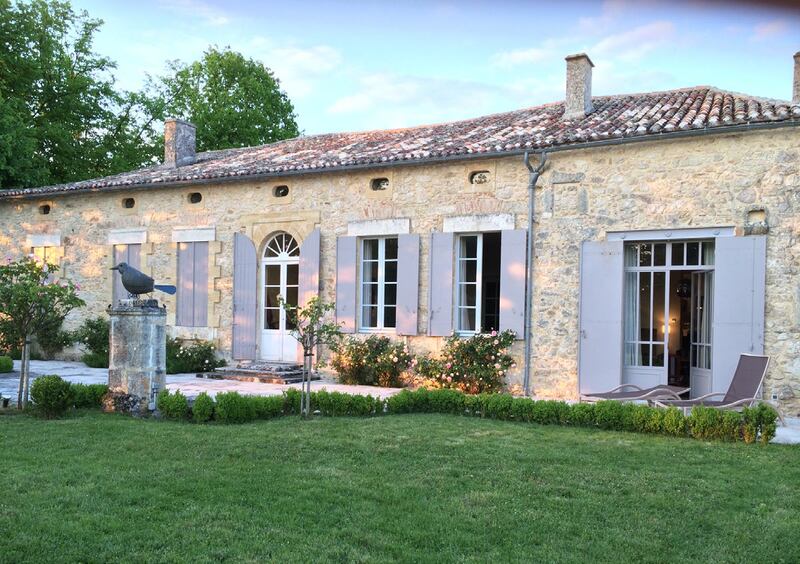 Opens in new window
Opens in new windowThe vineyard itself is only 3.95 acres (1.6 hectares) of the 8.65-acre (3.5-hectare) estate. Michael Baynes explains: “This is clearly what we would consider a hobby vineyard. Why? Because, with under 5 acres (2 hectares) of vines, it would be extremely challenging to make a living from this estate—this is all about the lifestyle and wine passion rather than cash flow.”
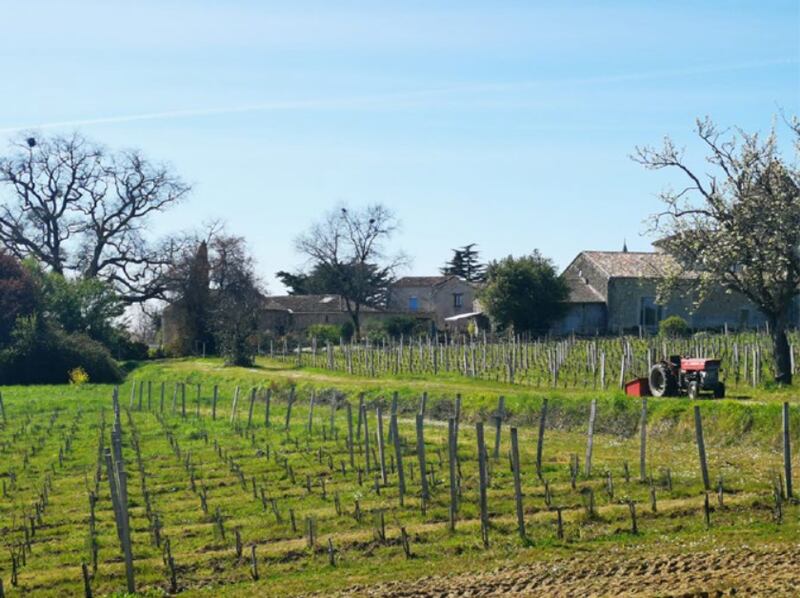 Opens in new window
Opens in new windowVineyards-Bordeaux has a handful of hobby vineyards listed in its portfolio with varying degrees of owner involvement available. “Sometimes, buyers like the idea of starting off gradually with all of the vineyard responsibilities and sales outsourced,” says Baynes. “But this can be a stepping stone, and we have seen people take a keen interest and evolve their estates into commercial operations over time.”
Hobby Vineyards in Tuscany, Italy
Wine production began in Italy by Phoenicians and Greeks, and developed over the following centuries by the Romans. Wine and wine production have long been a serious industry and part of the Italian culture. Today, however, Riccardo Romolini, co-founder and CEO of Tuscany-based affiliate Romolini Immobiliare sees a significant interest in the vineyard lifestyle.
“Purchasing a villa, a farmhouse, or a castle with a vineyard is buying a piece of our history,” Romolini says. For many, owning a property with a vineyard is a labor of love rather than an investment. “Even the most focused international investor could look beyond generating income by falling in love with a vineyard lifestyle project.” Romolini has a selection of small hobby vineyards for sale in some of Italy’s coveted DOCG wine regions, including Chianti Classico, Brunello di Montalcino, Bolgheri, and Prosecco.
And don’t forget that in case the vineyard does produce some income, there is no income tax for farming companies in Italy regardless of the business volume.”
Hobby Vineyards in Mendoza, Argentina
Another unique example of the hobby vineyard phenomenon is in the Argentine province of Mendoza—one of the world’s great wine capitals. Mendoza is home to more than 1,500 wineries ranging from boutique vintners to the most important wine producers in the country. Winemakers from all over the world are drawn by the warm climate’s long days of sunshine and little rain. The climate and the global popularity of the region (not to mention the competitive costs) have created a relatively new phenomenon for vineyards in Mendoza: the subdivision hobby vineyard or the “hobby-vineyard-as-a-resort.”
In this model, larger vineyards are subdivided into 4- to 7-acre plots and sold to vineyard hobbyists who want to own a piece of the vineyard lifestyle without the overhead of a larger commercial operation. These subdivisions often partner with developers to produce a total lifestyle experience for vineyard hobbyists including resort accommodations, wine mentors, and all manner of viticulture support staff. The hobbyists in these subdivisions can often produce their own small labels seasonally, having pride in production and ownership while maintaining their day jobs in cities far from the region in the off season.
According to Fernanda Canals, president of ReMind Group in Argentina, now is the time to take advantage of significant price reductions on vineyard estates in the region. With the expansion of wine tourism and the interest in Malbec wines (the primary grape in Mendoza) there is significant opportunity to purchase larger estates and offer a viticulture lifestyle to hobbyists looking to fulfill their dreams of becoming winemakers.
Mendoza, like the rest of Argentina’s housing market, has been strongly affected by the country’s currency devaluation. Although Argentina’s economy has historically cycled through booms and busts, Canals expresses optimism about the future: “I’m hopeful that Mendoza will attract more hobbyists from around the world. Mendoza offers a unique opportunity for international buyers, especially those from the United States.” The region has a reputation as the Napa Valley of the South; however, Mendoza wine estates can be purchased for a fraction of the price of those in Napa.
Hobby Vineyards in the Franschhoek Valley, South Africa
The Franschhoek Valley, an hour from Cape Town, is a beautiful region between the Wemmershoek Mountains and the Groot Drakenstein and Franschhoek Mountains on South Africa’s Western Cape. Mountain shade moderates the temperature of the valley floor, reducing the sunlight hours and trapping the cool southerly winds, lengthening the growing season. The terroir is mainly alluvial sandstone, while the northern slopes contain granite.
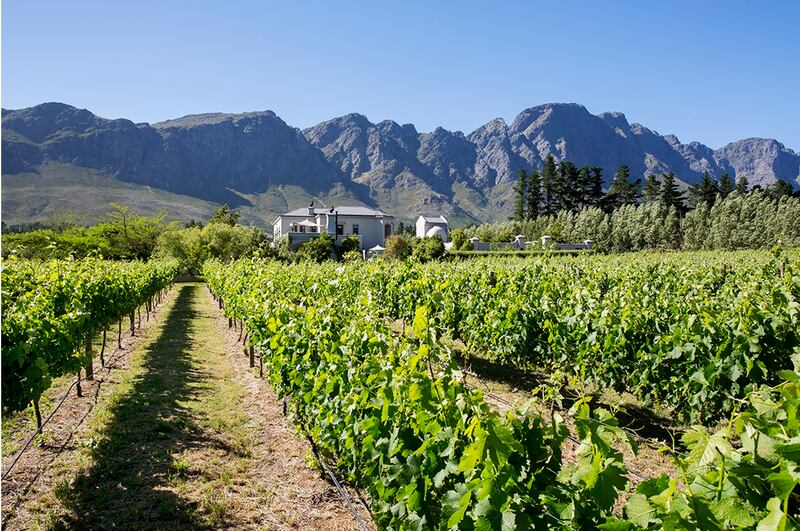 Opens in new window
Opens in new windowThe region has been producing wine since it was settled by the Huguenots in the 1680s. Today, it’s the largest wine-making region in South Africa with 45 wine farms, including the world-class L’Ormarins Estate, Boschendal Wine Farm, and La Motte Wine Estate.
A new generation of vintners are producing the region’s signature varieties, such as Chenin Blanc, and Pinotage, as well as Syrah, Pinot Noir, Cabernet Sauvignon, and complex Bordeaux blends. The Franschhoek Valley is the leading producer of South African Méthode Cap Classique (MCC) sparkling wine. MCC is an age-old Champagne-style fermentation process that draws on the French heritage of the original planters.
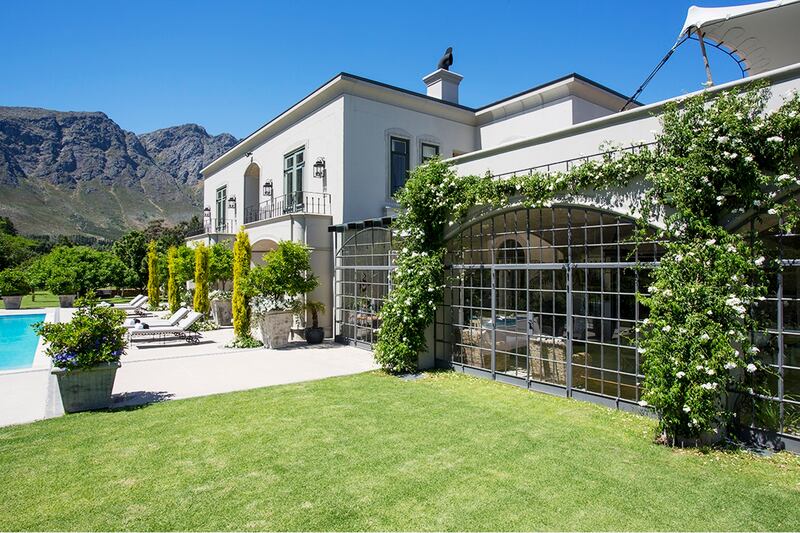 Opens in new window
Opens in new windowThere are about 45 wine farms in the Franschhoek region, including this private vineyard estate offered for sale by South African affiliate Greeff Properties. Encompassing nearly 5 acres (2 hectares) the property includes a merlot vineyard producing 4,000 bottles of wine per year, as well as a productive olive grove. The owner’s residence is a gracious villa with eight bedroom suites, a wine cellar, pool, tennis court, and mature, tree-lined gardens framed by panoramic views of the Franschhoek mountain ranges and the vine-clad valleys.
Hobby Vineyards in Croatia
Croatia is one of the world’s oldest wine-growing regions. Zinfandel, the Californian varietal, has its ancestral “roots” in Croatia: “Zin” is genetically identical to Tribidrag (or Crljenak Kaštelanski), which grows on the Dalmatian Coast. There are 66 appellations in the country’s four major wine regions: Dalmatia, Istria and Kvarner, Slavonia and the Croatian Danube, and the Croatian Uplands.
“Croatia is exceptionally suitable for the development of wine growing thanks to its geographic position, diversity of climate, and pedological [soil type] settings,” says Ivan Kovačić, CEO of Remington Realty Croatia. “The country’s four different regions reflect the influence of the Mediterranean, the Alps, and the Pannonian Basin. This diversity of terroirs results in a wide range of wine varieties and styles.”
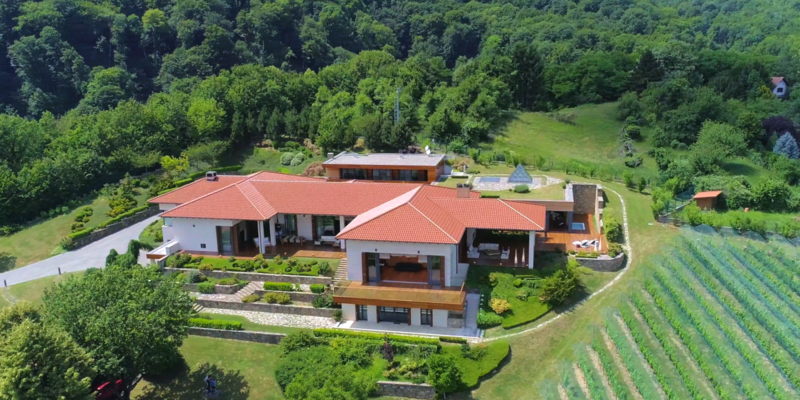 Opens in new window
Opens in new windowGraševina (Welschriesling) is the most widely grown grape in Croatia. It’s an aromatic, medium-bodied white wine that thrives in dry climates and warm soils inland. “Its different styles range from light sparkling wines to full-bodied, complex mature wines,” Kovačić says.
“The inland sub-regions produce an array of whites, such as Chardonnay, Pinot Gris, Traminer, Grüner Silvaner, and Sauvignon, and red wines, such as Pinot Noir, Merlot, Cabernet Sauvignon, and Blaufränkisch.” Also known as Frankovka, the latter is an intense, ruby colored, medium density wine produced in iron-rich terra rossa soils.
Kovačić adds, “Istria prides itself on Malvasia [an aromatic white wine], Muscat Rose, Muškat Momjanski, and [two indigenous reds] Teran and Borgonja. The Adriatic coast boasts thousands of islands, producing indigenous varieties such as Žlahtina, Maraština, Pošip, Grk, Babić, Plavina, and Plavac Mali.”
Many of these wines, including those from small vineyards, are available to international consumers through Croatia’s growing wine exports.
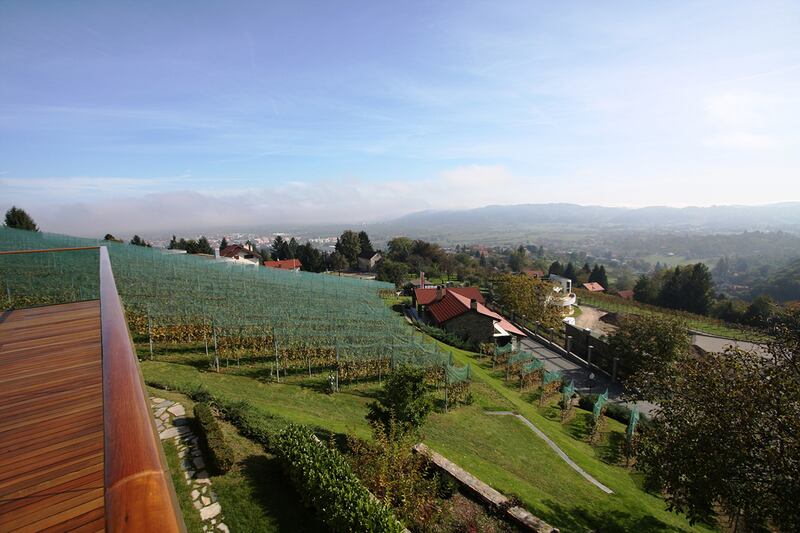 Opens in new window
Opens in new windowRemington Realty is listing a hobby vineyard planted with Pinot Gris and Silvaner (or Grüner Silvaner, as it’s more commonly known), an underrated, neutral-scented white wine grown mainly in the Alsace region of Germany. The estate produces about 3,000 bottles annually and includes a storage cellar, wine-tasting and entertainment areas. The 7.4 acres (3 hectares) of picturesque grounds also include formal gardens, an orchard, and a farm with several outbuildings. The main residence offers elegant living spaces and luxurious amenities, including an indoor pool, massage room, sauna, and gym. It’s a rural idyll, seemingly a world away, and yet it’s only half an hour’s drive from Croatia's capital, Zagreb.
Related: Learn Why Top Sommeliers are Rethinking this Italian Staple-Prosecco
Hobby Vineyards in Barcelos, Portugal
Another example of the hobby vineyard is in the beautiful wine region of Barcelos, northern Portugal. The estate dates back to the 17th century and includes a manor house with seven bedrooms, a caretaker's house, chapel, housing support annexes with the potential to adapt to the construction of apartments, as well as a wine cellar and agricultural warehouses. The hobby vineyard, just under 10 acres (4 hectares), is planted with the local Loureiro grape variety. The property has a scenic, rural location, 10 minutes from the Barcelos city center, 25 minutes from the coast and beaches, and 45 minutes from Porto.
Fellow Vineyard Masters Circle expert Ricardo Alves da Costa, Managing Director of Luximos, an affiliate in northern Portugal and the Algarve, has observed a growing trend of clients seeking hobby vineyards in Portugal as an asset class, attractive to buyers wanting the vineyard lifestyle but also taking advantage of some of the tax benefits that Portugal offers. “Many clients have been looking for properties that allow them to interact with nature,” says Alves da Costa. “Small vineyards have been particularly popular during this period.”


